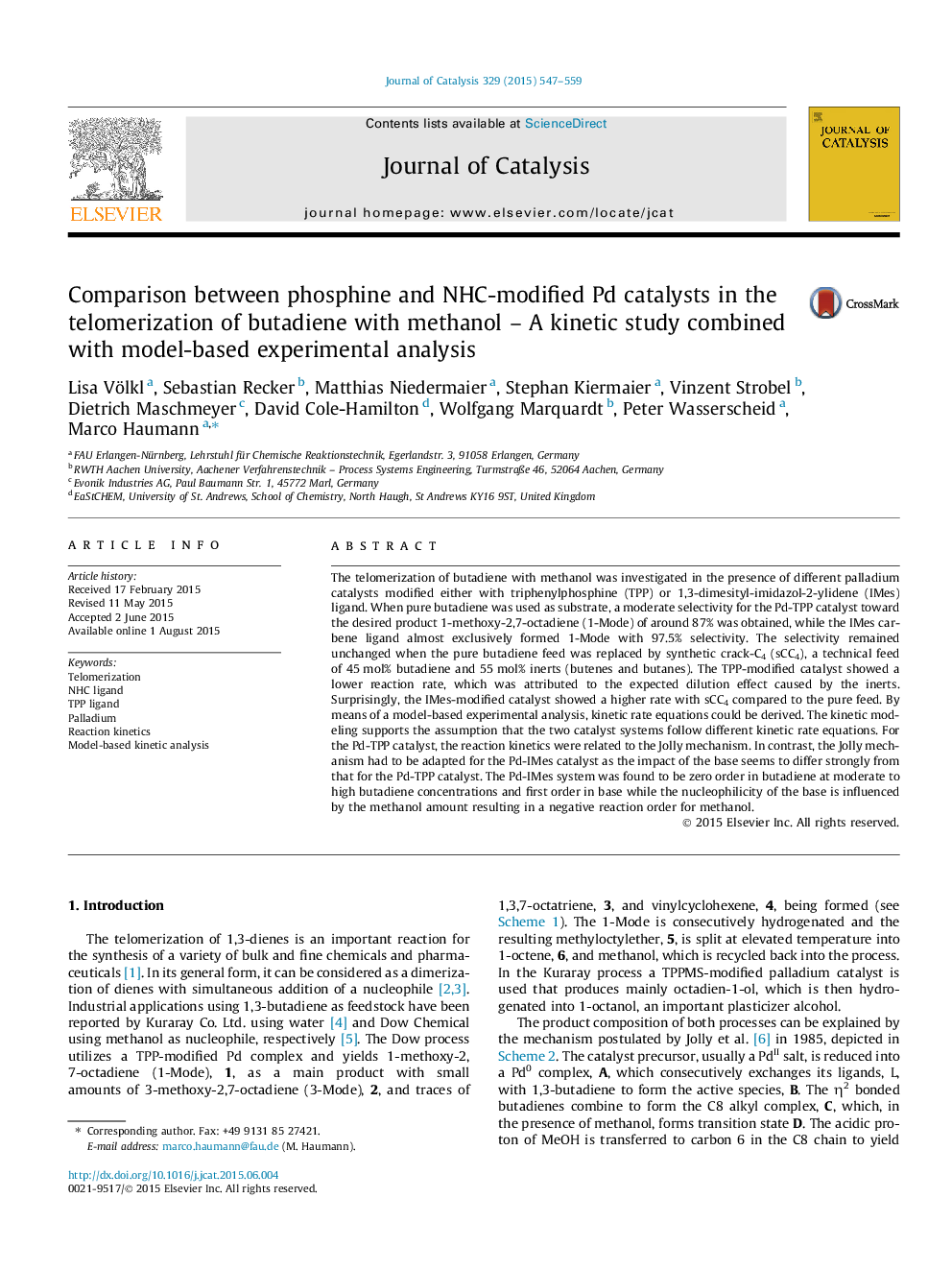| کد مقاله | کد نشریه | سال انتشار | مقاله انگلیسی | نسخه تمام متن |
|---|---|---|---|---|
| 60841 | 47548 | 2015 | 13 صفحه PDF | دانلود رایگان |

• Telomerization of pure and diluted 1,3-butadiene with methanol was catalyzed by two Pd-systems.
• Diluted butadiene resulted in lower activity for Pd-TPP, but surprisingly higher activity for Pd-IMes.
• For Pd-IMes the effective reaction rate is a strong function of base strength and concentration.
• Model-based kinetic analysis revealed different mechanisms for Pd-TPP and Pd-IMes.
The telomerization of butadiene with methanol was investigated in the presence of different palladium catalysts modified either with triphenylphosphine (TPP) or 1,3-dimesityl-imidazol-2-ylidene (IMes) ligand. When pure butadiene was used as substrate, a moderate selectivity for the Pd-TPP catalyst toward the desired product 1-methoxy-2,7-octadiene (1-Mode) of around 87% was obtained, while the IMes carbene ligand almost exclusively formed 1-Mode with 97.5% selectivity. The selectivity remained unchanged when the pure butadiene feed was replaced by synthetic crack-C4 (sCC4), a technical feed of 45 mol% butadiene and 55 mol% inerts (butenes and butanes). The TPP-modified catalyst showed a lower reaction rate, which was attributed to the expected dilution effect caused by the inerts. Surprisingly, the IMes-modified catalyst showed a higher rate with sCC4 compared to the pure feed. By means of a model-based experimental analysis, kinetic rate equations could be derived. The kinetic modeling supports the assumption that the two catalyst systems follow different kinetic rate equations. For the Pd-TPP catalyst, the reaction kinetics were related to the Jolly mechanism. In contrast, the Jolly mechanism had to be adapted for the Pd-IMes catalyst as the impact of the base seems to differ strongly from that for the Pd-TPP catalyst. The Pd-IMes system was found to be zero order in butadiene at moderate to high butadiene concentrations and first order in base while the nucleophilicity of the base is influenced by the methanol amount resulting in a negative reaction order for methanol.
Figure optionsDownload high-quality image (92 K)Download as PowerPoint slide
Journal: Journal of Catalysis - Volume 329, September 2015, Pages 547–559